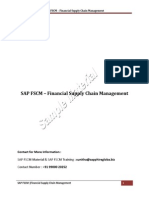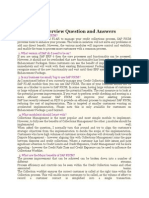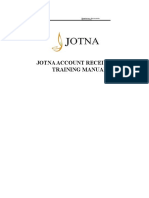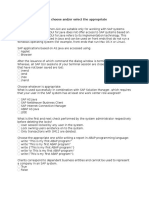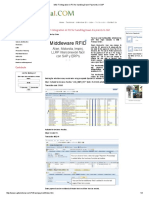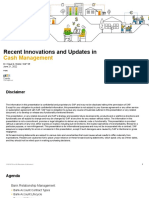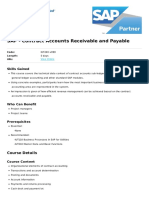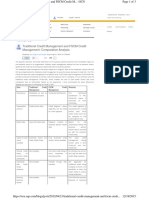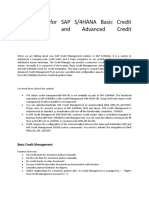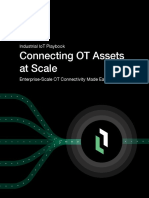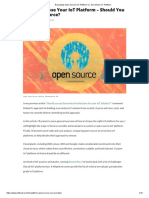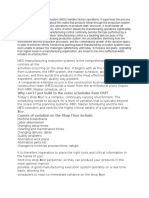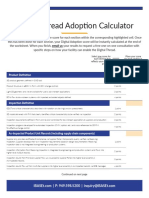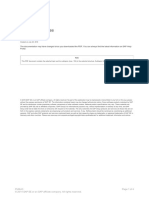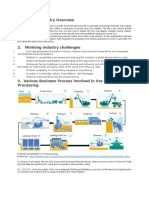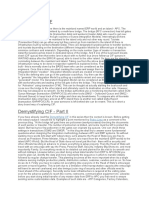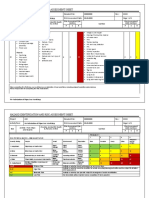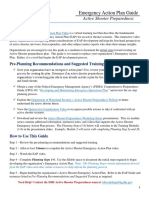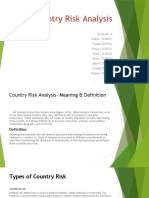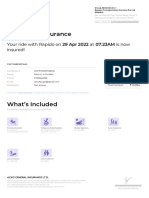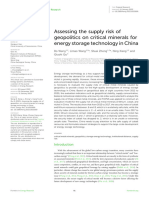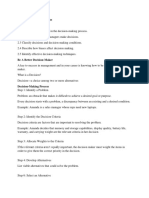The payment behavior and credit worthiness of the business partner/customer have immediate impact on
the business result of an organization. Efficient credit management reduces the risk of business losses,
optimizes the credit risk and improves relationship with the business partner.
The traditional credit management has been stayed for a longtime. Most of the companies using FI-AR
and SD have implemented the traditional credit management to avoid the losses because of credit risk.
The FIN-FSCM-CR takes the credit management to a different level. The FSCM credit management (FINFSCM-CR) provides enhanced functionality to monitor credit and exposure risk of a company. It is an
extension over the traditional credit management (FI/SD-CM), which enables the user to have better
control and more transparent view on receivables. Based on my experience, I have summarized the basic
differences between the two ways of managing the credit in SAP.
Area
Architecture
Traditional
Management
Credit
Distributed as well as
centralized structure
FSCM
Management
Credit
Distributed Architecture
Remarks
The
distributed
architecture of FINFSCM-CR makes it
necessary
to
have
interfacing.
Organizatio
n element
Credit Control Area
Credit Segment Many
segments can be linked
to a main segment
The credit segment is
associated with a credit
control
area.
Each
credit control area can
be assigned to one
credit segment only.
Master data
Uses AR master data
Requires
creation
of
Business partner master
data
Based
on
the
customizing setting the
business partner master
data is synched up with
the customer master
data.
Types
of
credit check
available
Automatic Check and
Static Credit Check
Only Automatic credit
control will be available
The
basic
credit
management
setting
remain same in both
FI/SD-CR and FINFSCM-CR.
Storing
credit rating
of external
rating
companies
Not Available.
Can store credit rating of
many
companies
in
business partner.
An interface can be setup to get the data from
credit rating company.
�Interfacing
with credit
rating
company
Not Available.
Possible
interface
through
XML
Not
Applicable
for
traditional credit rating
company as there is no
possibility to store the
credit rating of various
rating companies.
Defining
blocking
reason
Not Available.
Credit
Exposure
data
Available
at
credit
control area level.
Available
at
credit
segment level with the
breakup
under
each
category.
Credit
data
Needs to collect from
external company and
uploaded
manually
based
on
manual
calculation
Can be derived based on
both internal and external
data.
FIN-FSCM-CR,
credit
limit data can be
requested within SAP
and based on external
and internal rating the
limit can be calculated
within SAP system.
Reviewing
limit
Intermittent
manual
review is set-up to
derive and reclassify the
credit limit.
Improved
and
automated process in
FSCM
credit
management.
Additional
Set-up
requires
Not Required
Can
be
done
automatically within SAP
by utilizing the live/
internal data along with
the external rating.
Maintaining
interface
through XI/PI or point to
point interface.
Available.
limit
FIN-FSCM-AR provides
blocking of business
partner data providing a
reason code.
WS-RM can be used
from ECC6.0 EHP5.
The interface is used for
real-time exposure and
transaction data flow
between AR and FSCM
credit
management.
This
is
required
because of distributed
architecture of FSCM.
As we have seen here, the FSCM-Credit management has same underlying functionality as that of the
traditional credit management. FIN-FSCM_AR doesnt replace the traditional credit management but is
simply is an extension over the existing credit management. With the implementation of the FIN-FSCMCR, the companies are able to reduce the manual work, streamline adhoc work, and make better decision
for credit management based on the internal as well external data.




